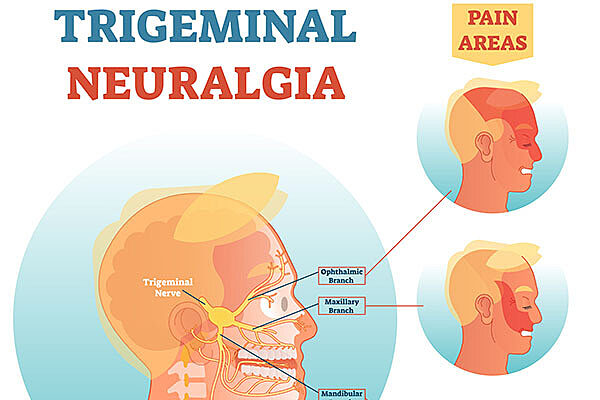Trigeminal neuralgia is often described as one of the most excruciating pain disorders known to medicine. Characterized by sudden, severe facial pain, it can disrupt daily life and affect emotional well-being. If you or someone you know is living with this condition, understanding the causes, symptoms, and treatment options can make a significant difference.
In this comprehensive guide, we’ll explore what trigeminal neuralgia is, delve into its root causes, outline common symptoms, and review the most effective treatments available today.
What is Trigeminal Neuralgia?
Trigeminal neuralgia (TN), also known as tic douloureux, is a chronic pain condition that affects the trigeminal nerve, which carries sensation from the face to the brain. Even mild stimulation of the face—like brushing your teeth or putting on makeup—can trigger intense, electric-shock-like pain.
The condition is more common in people over 50, though it can occur at any age. Women are slightly more likely to develop trigeminal neuralgia than men.
Causes of Trigeminal Neuralgia
Several factors can contribute to the development of TN. The most common causes include:
1. Nerve Compression
In most cases, trigeminal neuralgia is caused by a blood vessel pressing on the trigeminal nerve. This pressure wears away the protective coating (myelin) around the nerve, leading to erratic and intense pain signals.
2. Multiple Sclerosis (MS)
Trigeminal neuralgia may also occur in people with MS, a disease that damages the myelin sheath. TN is sometimes one of the first signs of MS.
3. Tumors
Though rare, tumors pressing against the trigeminal nerve can cause facial pain similar to TN.
4. Injury or Surgery
Facial trauma or surgical procedures near the trigeminal nerve can lead to nerve damage, resulting in symptoms of TN.
5. Unknown Causes
In some instances, no clear cause is found, and the condition is classified as idiopathic.
Common Symptoms of Trigeminal Neuralgia
Symptoms can vary between individuals, but the hallmark signs of trigeminal neuralgia include:
- Sudden, severe, and stabbing facial pain
- Pain that lasts from a few seconds to a couple of minutes
- Pain triggered by everyday actions such as talking, eating, shaving, or touching the face
- Pain episodes that become more frequent over time
- A burning or aching sensation between attacks
Trigeminal neuralgia usually affects only one side of the face and can involve the jaw, cheek, teeth, gums, lips, or even the eye.
Diagnosis of Trigeminal Neuralgia
Proper diagnosis is essential to managing TN effectively. Physicians usually rely on:
- Medical History: A detailed discussion of symptoms and triggers.
- Neurological Exam: Assessing touch and reflexes to locate the affected nerve.
- MRI Scans: To rule out MS or tumors and visualize nerve compression.
Trigeminal Neuralgia: Causes, Symptoms, and Effective Treatments
When it comes to trigeminal neuralgia: causes, symptoms, and effective treatments, managing the condition requires a multifaceted approach. Treatment options fall into several categories:
1. Medications
- Anticonvulsants: Drugs like carbamazepine and oxcarbazepine are often the first line of treatment. They stabilize nerve activity and reduce pain episodes.
- Muscle Relaxants: Baclofen may be prescribed alone or with other medications to ease nerve pain.
- Tricyclic Antidepressants: These can help treat burning or aching pain that doesn’t respond to standard TN drugs.
2. Surgical Options
For those who don’t find relief with medications, surgical procedures may be considered:
- Microvascular Decompression (MVD): A blood vessel pressing on the nerve is repositioned or removed. MVD offers long-term relief for many patients.
- Rhizotomy: This involves destroying nerve fibers to block pain signals. Techniques include balloon compression, glycerol injection, or radiofrequency thermal lesioning.
- Gamma Knife Radiosurgery: A non-invasive method using focused radiation to damage the trigeminal nerve and reduce pain.
3. Lifestyle and Coping Strategies
- Avoid Triggers: Keeping a diary to track pain triggers—like cold air, wind, or chewing—can help in planning activities.
- Stress Management: Mindfulness, meditation, and therapy can reduce the intensity of attacks.
- Support Networks: Joining a support group can provide emotional relief and practical advice from others facing similar challenges.
4. Complementary Therapies
While these should not replace conventional treatments, many patients find relief through:
- Acupuncture
- Biofeedback
- Chiropractic care
- Nutritional adjustments (especially Vitamin B12)
Living with Trigeminal Neuralgia
Daily life with TN can be unpredictable. The sudden nature of the pain can cause anxiety, depression, and social isolation. That’s why emotional support is just as crucial as physical treatment. It’s important to work closely with your healthcare provider to find a tailored plan that addresses both physical and emotional needs.
Tips for Coping:
- Stick to a consistent medication schedule
- Practice relaxation techniques
- Keep warm during cold weather
- Stay hydrated and maintain a balanced diet
- Communicate openly with loved ones about your condition
Conclusion
Trigeminal neuralgia can be life-altering, but it is manageable with the right approach. From understanding the causes and symptoms to exploring effective treatments, every step you take brings you closer to a more comfortable life. Don’t let this condition define your days—seek help, find support, and explore the options available to you.
For more detailed resources and support, visit our dedicated page on trigeminal neuralgia: causes, symptoms, and effective treatments.
Frequently Asked Questions (FAQ)
1. Is trigeminal neuralgia a lifelong condition? It can be, but some people experience remission. Effective treatment can significantly reduce the impact of symptoms.
2. What triggers a TN attack? Common triggers include touching the face, chewing, talking, wind, brushing teeth, or even smiling.
3. Can trigeminal neuralgia be cured? While there’s no guaranteed cure, many patients find long-term relief through surgery or a combination of treatments.
4. Is it safe to use alternative therapies like acupuncture? Yes, when done under professional guidance. However, it should be used alongside—not instead of—medical treatment.
5. Should I see a neurologist for TN? Yes, a neurologist can provide specialized care, advanced diagnostics, and discuss surgical options if necessary.



